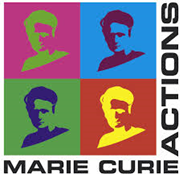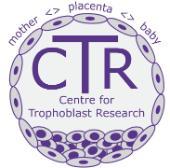Profile
I studied Natural Sciences in Cambridge, and then completed a PhD at the University of Bath on the transcriptional control of the imprinted insulin-like growth factor 2 (Igf2) gene. My research career has focused primarily on the relationship between epigenetic gene dosage control and developmental physiology. Much of my work has utilised imprinted genes in the mouse as experimental models, since the epigenetic modulation of these exquisitely dosage-sensitive genes has important consequences for prenatal growth and development in mouse and man. Some examples of my work include the demonstration that loss of imprinting on mouse chromosome 12 causes failure of timely development of brown adipose tissue, resulting in animals that are unable to survive the transition to independent postnatal life. I previously described a mouse model with defects in placental development and growth as a result of the loss of function of the imprinted Grb10 gene. In addition I undertook a training postdoctoral position in metabolic medicine in order to link my interest in prenatal growth and development with lifelong outcomes on metabolic health. I was appointed to an Early Careers Fellowship at the Centre for Endocrinology in early 2013, and became a Senior Lecturer in 2015.
Memberships and awards
Committee member of the Genetics Society since April 2015.
Research
• Endocrinology: Genomics & Stratified Medicine • Endocrinology: Experimental Medicine & Pharmacology
Summary
Imprinting, growth and maternal-foetal interactions
In the 1980s mouse nuclear transplantation experiments revealed that both parental genomes are required for successful development to term. This non-equivalence of parental genomes is due to imprinted genes expressed predominantly from only one parental chromosome. More than 70 imprinted genes have now been discovered and the functions of many assessed in a range of murine models. Many of the same genes are also imprinted in humans, and uniparental inheritance of these genomic regions causes paediatric growth disorders such as Beckwith-Wiedemann or Prader-Willi syndromes. The first genes shown to be imprinted were the foetal growth factor Igf2 (Figure 1) and its inhibitor Igf2r. Since then it has emerged that the majority of imprinted genes modulate fetal growth and resource acquisition in a variety of ways. First, imprinted genes are required for the development of a functional placenta, the organ that mediates the exchange of nutrients between mother and fetus. Second, these genes act in an embryo-autonomous manner to affect the growth rate and organogenesis. Finally, imprinted genes can signal the nutritional status between mother and fetus, and can modulate levels of maternal care. Importantly, many imprinted genes have recently been shown to affect postnatal growth and metabolism. As intrauterine growth retardation is often associated with increased risk of metabolic syndrome and cardiovascular disease, it is crucial to understand how the modulation of this dosage-sensitive, epigenetically regulated class of genes can contribute to growth, disease, and lifelong health.

Our work is focused on the following questions:
1) How do imprinted genes modulate the transfer of nutrients between mother and foetus during pregnancy?
a) Investigating imprinted gene function in the placenta.
We have utilised conditional targeting combined with fluorescent reporters (Figure 2) to understand the role of imprinted genes in the developing placenta, and how this relates to embryonic growth.

b) Imprinted gene products signal to the mother to alter her response to fasting during pregnancy.
We recently showed that the product of the paternally-expressed Delta-like 1 homologue gene (DLK1) is synthesised by fetal tissues during embryogenesis and enters the maternal circulation during pregnancy. High levels of DLK1 in the mother’s blood promotes ‘accelerated starvation of pregnancy’ – the rapid breakdown of adipose stores and utilisation of ketones for fuel by the mother in response to food restriction. This spares glucose for fetal growth. Embryos with a deletion of the Dlk1 gene are small. Moreover, we showed that maternal DLK1 levels are in low in women with complicated pregnancies who give birth to small babies.
2) Can modulations in imprinted gene dosage modulate body composition to alter metabolic set points for the lifetime of the individual?
We are using conditional targeting combined with fluorescent reporters (Figure 4) to understand the role of imprinted genes in the developing adipose tissue, and relating this to adipose turnover and glucose homeostasis over the lifetime of the individual.
Group members
Current
Ms Féaron Cassidy (WHRI PhD student); Dr Claire Dent (MRC postdoctoral researcher); Dr Alejandro Ibanez-Costa (Marie Curie COFUND Fellow)
Previous
Ms Isabella Carrus (visiting ERASMUS student); Dr Mary Cleaton (Centre for Trophoblast Research PhD student); Ms Eleanora Garrezini (
visiting ERASMUS student); Dr Mark Howard (WHRI postdoctoral researcher)
Publications
Full list of publications
- Cleaton MAM, Dent, CL, Howard M, Corish JA, Gutteridge I, Sovio, U, Gacciolo, F, Takahashi N, Bauer SR, Charnock-Jones, DS, Powell TL, Smith, GCS, Ferguson-Smith AC, Charalambous M. Fetus-derived DLK1 is required for maternal metabolic adaptations to pregnancy and is associated with fetal growth restriction. Nature Genetics October 2016.
- Charalambous M, Da Rocha ST, Radford EJ, Medina-Gomez G, Curran S, Pinnock SB, Ferrón SR, Vidal-Puig A, Ferguson-Smith AC. (2014). DLK1/PREF1 regulates nutrient metabolism and protects from steatosis. Proc Natl Acad Sci U S A. Epub Oct 27.
- Charalambous M, da Rocha ST, Hernandez A, Ferguson-Smith AC. (2014). Perturbations to the IGF1 growth pathway and adult energy homeostasis following disruption of mouse chromosome 12 imprinting. Acta Physiol (Oxf); 210(1):174-87.
- Charalambous, M., Ferrón S. R., da Rocha, S. T., Murray, A. J., Hernandez, A., Ferguson-Smith, A. C*. (2012). Imprinted gene dosage is critical for the transition to independent life. Cell Metab 15(2): 209-212
- Charalambous, M., Cowley, M., Googehan, F., Smith, F. M., Radford, E., Hurst, L. D. H., Ward, A. Maternally-inherited Grb10 reduces placental size and efficiency (2010). Dev Biol 337:1-8.
- Charalambous, M., Menheniott, T. R., Bennett, W. R., Kelly, S. M., Dell, G., Dandolo, L. and Ward, A. (2004). An enhancer element at the Igf2/H19 locus drives gene expression in both imprinted and non-imprinted tissues. Dev Biol 271, 488-97.
- Charalambous, M., Smith, F. M., Bennett, W. R., Crew, T. E., Mackenzie, F. and Ward, A. (2003). Disruption of the imprinted Grb10 gene leads to disproportionate overgrowth by an Igf2-independent mechanism. Proc Natl Acad Sci U S A 100, 8292-7
Collaborators
We are a core group within the QMUL Epigenetics Hub.

Internal
Dr Paula Longhi, Dr Carles Gaston-Massuet, Prof Marta Korbonits.
External
Prof Gordon Smith (Department of Obstetrics and Gynaecology, University of Cambridge, UK); Prof Anne Ferguson-Smith (Department Genetics, University of Cambridge, UK); Prof Andrew Ward, Centre for Regenerative Medicine, University of Bath, UK. Dr Raul M Luque Huertas, IMIBIC, Spain.
Teaching
Problem Based Learning Facilitation - first and second-year medical students.
BSc Biomedicine – lectures on the Endocrine Physiology and Biochemistry Modules.
BMedSci – lectures on ‘Epigenetic control of gene expression’, ‘Techniques in Molecular Biology’, and ‘Appetite Regulation’. Hosting 3-month lab projects.
MSc Genomic Medicine – lectures on ‘Transcriptomics’ and ‘Model Organisms’
MRes Inflammation – journal clubs and lectures on ‘Epigenetics’. Hosting 3-month rotation lab projects.








